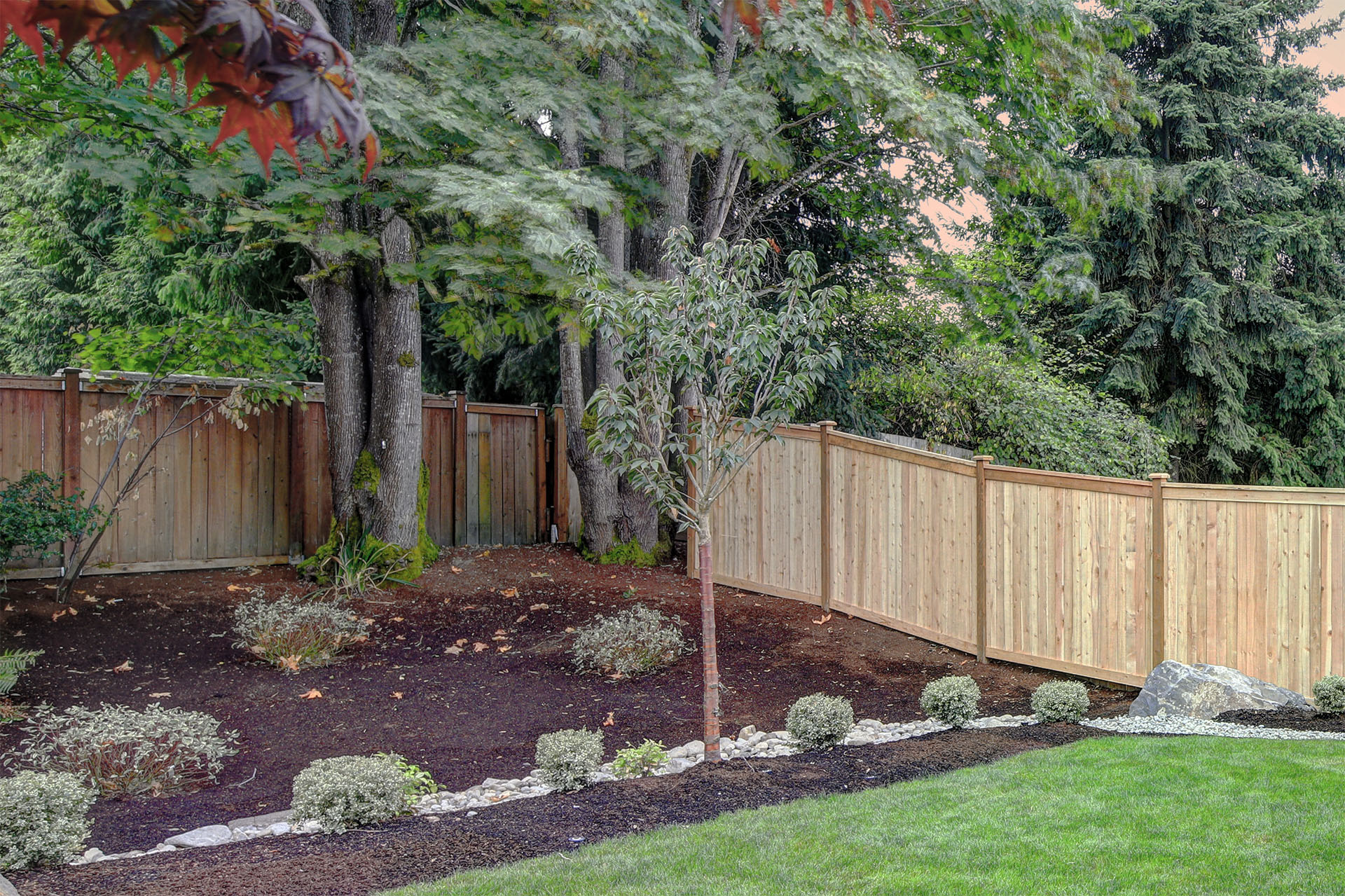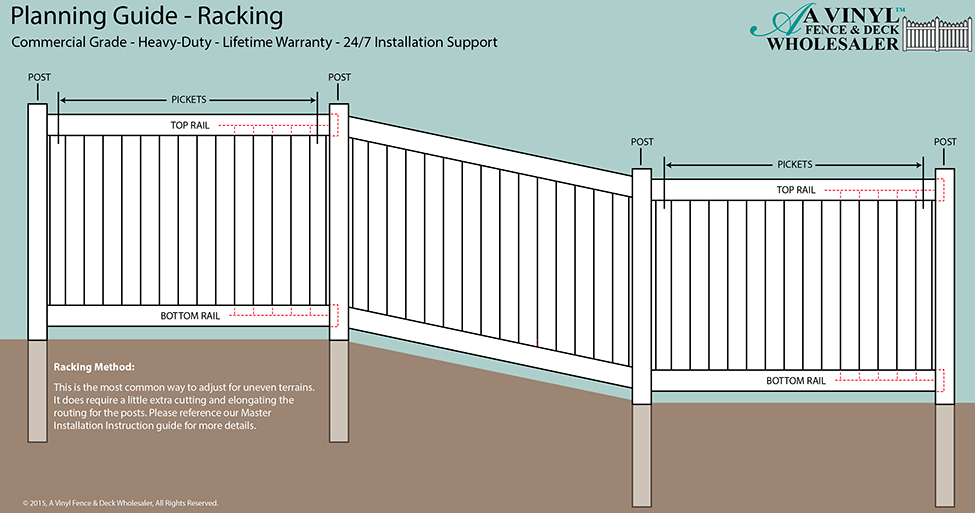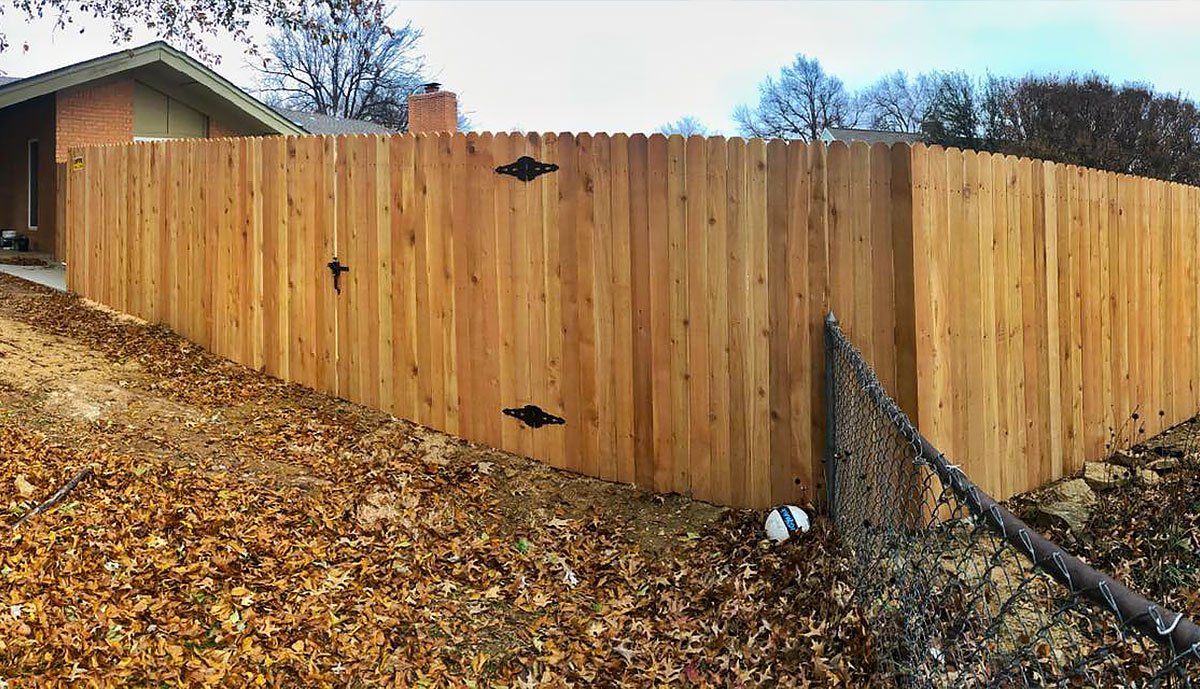To build a fence on uneven ground, use a tiered approach or install adjustable fence posts. Measure the slope and plan your fence layout accordingly.
Building a fence on uneven terrain can be challenging but rewarding. An uneven landscape adds character to your yard, yet it complicates fence installation. Proper planning and the right materials can help you overcome these obstacles. Techniques like tiering or using adjustable posts ensure your fence remains sturdy and visually appealing.
Understanding the slope’s angle is crucial for accurate measurements. With a bit of patience and creativity, you can create a functional barrier that enhances your property’s aesthetics. This guide provides step-by-step instructions to help you navigate the process successfully. Enjoy your new fence that complements the natural contours of your land.

Credit: bravofencecompany.com
How to Build a Fence on Uneven Ground : Step by Step Guide
Introduction To Building Fences On Uneven Ground
Building a fence on uneven ground can be tricky. Proper installation is crucial for stability. A well-built fence improves safety and looks great. Poor installation may lead to leaning or falling fences. This can create hazards for pets and children.
Challenges include measuring the ground’s slope accurately. Uneven terrain makes it hard to set posts at the same height. Different soil types can affect the durability of the fence. Weather conditions can also complicate the building process.
Using adjustable brackets can help with uneven surfaces. These allow for a more balanced and sturdy fence. Planning and preparation are key to a successful installation.

Credit: www.vinylfenceanddeck.com
Types Of Fences Suitable For Uneven Terrain
Wooden fences are a popular choice for uneven ground. They can be cut and shaped easily. This allows for a perfect fit on sloped areas. Natural beauty is another advantage of wooden fences. They blend well with nature.
Chain link fences are flexible and lightweight. They can adapt to various terrains easily. These fences provide good visibility while keeping pets and children safe. Maintenance is simple and cost-effective.
Vinyl fences offer durability and low maintenance. They come in many styles and colors. These fences resist weather and insects well. Installation is straightforward, making them suitable for uneven ground.
Pre-construction Planning
Start by assessing the terrain. Check for slopes, rocks, and soil type. This will help plan the fence layout. Use a level to find the highest and lowest points.
Next, choose the right materials. Wooden fences work well on uneven ground. Metal fences can be durable and strong. Consider using posts that adjust to height differences.
Check local legal considerations. Look for zoning laws and building codes. Some areas require permits for fences. Ensure your fence complies with property lines to avoid disputes.
Tools And Materials Needed
Building a fence on uneven ground requires the right tools and materials. Here is a list of essential tools:
- Shovel: For digging post holes.
- Level: To ensure posts are straight.
- Measuring tape: For accurate measurements.
- Power drill: For easy installation of screws.
- Hammer: Useful for driving in nails.
- Saw: To cut fence panels to size.
Material selection is crucial. Choose durable materials that fit your needs. Here is a simple table for material quantity:
| Material | Quantity |
|---|---|
| Fence Panels | 10 |
| Posts | 5 |
| Screws | 50 |
| Nails | 100 |
Step-by-step Guide To Building The Fence
Start by marking the boundary where the fence will go. Use stakes and string to outline the area. Ensure the line is straight and clear. Measure the distance between posts carefully.
For setting posts in uneven ground, dig holes at different depths. Use a level to check if each post is straight. Fill the holes with concrete for stability. Allow the concrete to set before moving on.
Next, focus on attaching panels or links. Use brackets and screws for secure connections. Make sure each panel is level and aligned. This ensures a strong and nice-looking fence.
Custom Solutions For Steep Slopes
Building a fence on steep slopes can be tricky. Different methods help make it easier.
Step Method: This method uses individual panels. Each panel fits the slope’s angle. It allows for a straight top line.
Slope Method: This method follows the natural slope. The fence stays level while the ground changes. It creates a smooth look.
Terracing: This option involves creating steps. Each step forms a flat area for the fence. It provides stability and visual appeal.
Maintenance And Care For Longevity
Regular routine checks help keep your fence strong and safe. Look for loose boards or rusty nails. Check for signs of rot or damage. Fix any problems quickly to prevent bigger issues.
For repair and replacement, use quality materials. Replace broken boards with new ones that match. Use rust-resistant screws for durability. Always ensure the posts are stable. Keep the area around the fence clear of debris.
Cleaning the fence regularly will prevent dirt buildup. Use a gentle cleaner and a soft brush. This will help maintain its appearance and longevity.
Common Mistakes To Avoid
Improper spacing can lead to a fence that looks uneven. Make sure to measure correctly. Each post should have the same distance from one another.
Neglecting local regulations can cause issues later. Always check the rules for your area. This prevents fines and helps avoid conflicts with neighbors.
Failing to account for drainage can cause problems over time. Water pooling around posts may weaken them. Ensure water flows away from your fence.

Credit: www.pinterest.com
Frequently Asked Questions
How Do You Start Building A Fence On Uneven Ground?
Begin by assessing the terrain. Identify the highest and lowest points in your area. This will help you determine the fence height and design. Use stakes to mark where the fence will go. A clear plan simplifies the entire building process.
What Materials Are Best For Uneven Ground Fencing?
Opt for materials like wood, vinyl, or metal. Each material has its strengths and weaknesses. Wood is versatile but may require more maintenance. Vinyl is durable and low-maintenance. Metal provides strength but may need careful installation on slopes.
How Do I Dig Post Holes On Uneven Terrain?
Use a post hole digger or auger for efficiency. Start at the highest point and work down. Ensure holes are deep enough for stability. Consider adding gravel for drainage. This prevents water accumulation and keeps your posts secure.
Can I Install A Fence Without Leveling The Ground?
Yes, you can install a fence without leveling the ground. Follow the natural contours of the land. Use a technique called “step fencing” to adapt to slopes. This method maintains the fence’s integrity while complementing the landscape.
Conclusion
Building a fence on uneven ground can be challenging but rewarding. Proper planning and the right materials make all the difference. Take your time to measure and adjust. This effort ensures a sturdy and visually appealing fence. With these tips, you can enhance your outdoor space beautifully and effectively.

